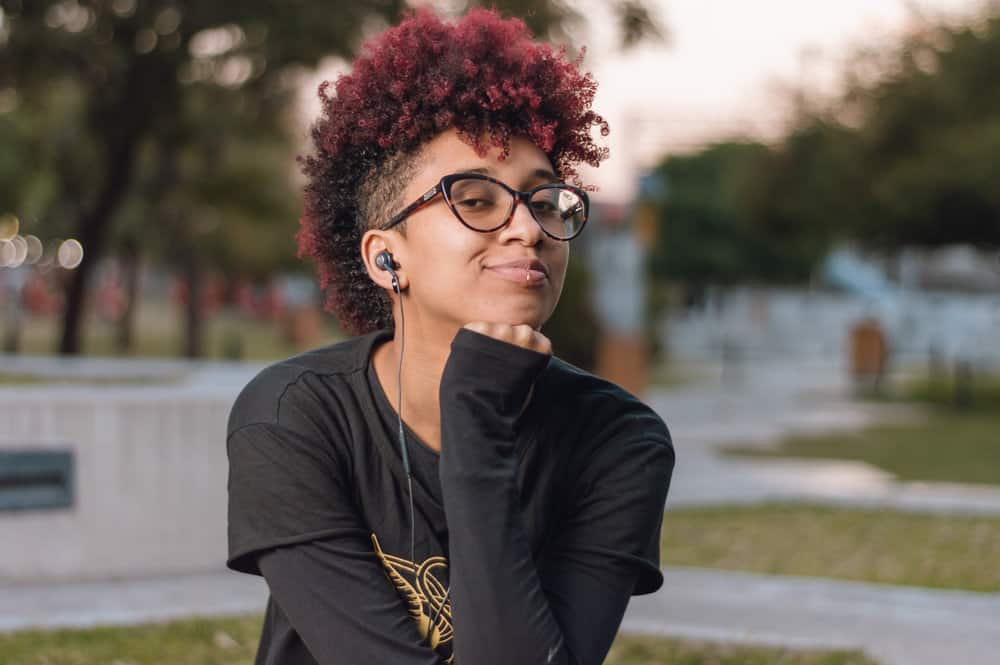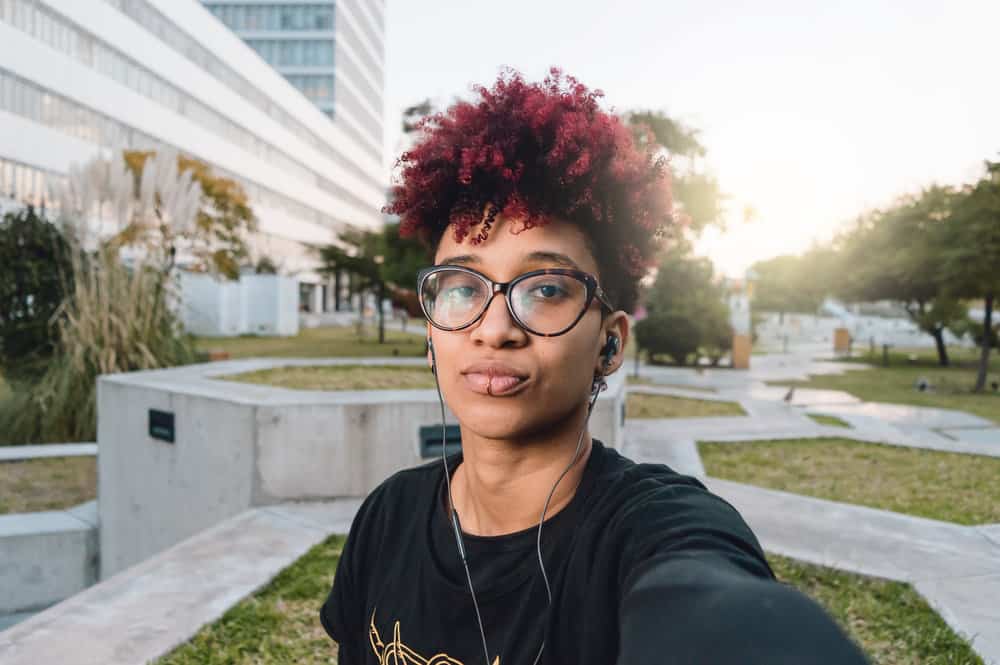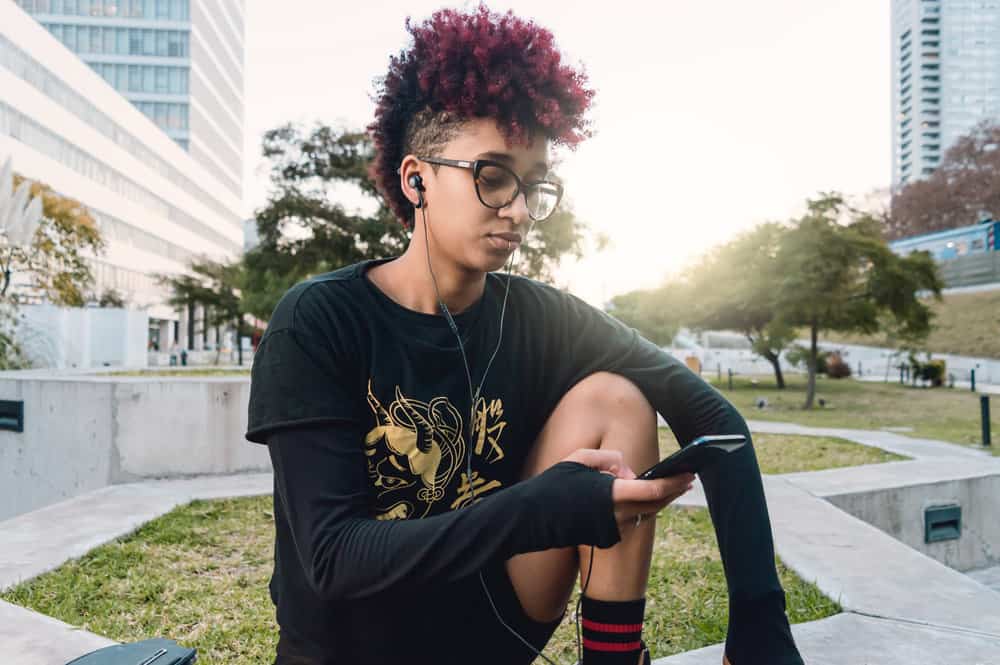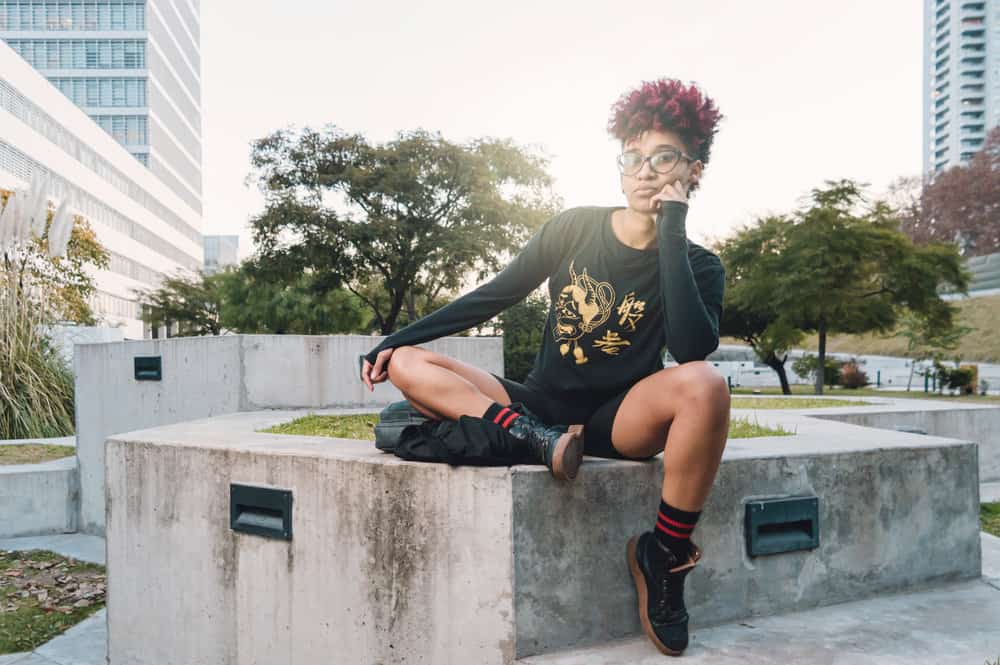
Have you ever looked at your scalp a couple of days post-bleaching and noticed little scabs? It’s an unfortunate issue that some experience after going from brown or black to platinum, bleach blonde, or another light hue.
If you're dealing with scabs on your scalp from bleach usage, we’re here to help! In this article, we’ll take a look at why scabs can form on your scalp after bleaching your hair. We’ll also provide some remedies to help ease your pain and ensure everything returns to normal.
Table of Contents
Why Are There Scabs on My Scalp After Bleaching?
Scabbing, scalp burning, and stinging are all signs of a chemical burn. Hair bleach mixtures are full of harsh chemicals, including persulfates, alkalizing agents, and hydrogen peroxide.
Even if you’re careful, there’s always a chance that these chemicals will damage your delicate skin and leave you with scabs. Developing scabs after bleach isn’t necessarily a good sign, but it's common for your scalp to react this way after exposure to such strong irritants.

How Long Does It Take for Your Scalp to Heal From Bleaching?
There’s no set amount of time that a scalp takes to heal after a chemical burn. It’ll depend on how healthy your scalp is and the severity of your burns.
For example, a minor scalp burn can heal in just a few days.
But a more serious bleach burn can take weeks, and often months, to fully recover. The good news is that properly caring for your scalp and chemical burns will speed up your recovery.
How to Treat and Heal Scabs on Scalp From Bleach
Scalp burns are painful, unsightly, and often lead to hair loss. But luckily, there are ways to promote healing and revitalize your scalp. We’ll walk you through them below.
Cut Down on How Many Hair Care Products You Use
Scabs are the results of open wounds. So, to avoid irritating your skin further, you should cut down on the amount of product you apply to your scalp.
That will help reduce irritation and prevent any more irritating ingredients from interfering with the healing process. You should also make an extra attempt to avoid products that have harmful ingredients like:
- Alcohol
- Sulfates
- Parabens
- Synthetic dyes and fragrances
Keep Your Scalp Clean
Keeping things clean should be a top priority whenever you have a cut or burn. Keeping the area clean will encourage healing and prevent infection.
As soon as you notice the scabs, rinse your scalp with cool water. After that, only touch your scalp with clean hands (or wear gloves) to avoid introducing bacteria to the area.

Keep the Burn Moisturized
Regularly moisturizing your burns will help relieve pain and give you relief from other burn symptoms like itching and flaking. Additionally, keeping a burn moist helps promote healing, so your scabs can recover much more quickly.
Just make sure you apply the moisturizer with clean hands. There are a few different products you can use, including:
Avoid Over-Manipulating Your Scalp
While waiting for your scalp to heal, it's important to avoid rubbing, scratching, or pulling at the skin. Otherwise, it won’t be able to recover, and you’ll end up aggravating the wound. You should also leave the scabs alone and avoid picking at them.
Take an OTC Remedy
Redness, swelling, and itching are signs of inflammation. So, if your scabs are accompanied by these other symptoms, taking an OTC pain killer, corticosteroid cream, or antihistamine can help ease your symptoms. Always ask a medical professional before starting any new treatments.

Visit Your Doctor
If you’ve experienced a moderate to severe chemical burn, it's a good idea to schedule an appointment with a medical professional. They can give you more clarity about what is going on with your scalp and help you address it before things get worse.
Here are some signs that it's time to reach out to a doctor.
- The scabs affect a large portion of your scalp.
- They aren't responding to your healing efforts.
- You’re experiencing signs of infection like pus, fever, or a foul smell.
- Your burns and scabs are severe.
How to Protect Your Scalp When Bleaching Your Hair
As the saying goes, prevention is the best medicine. The most effective way to deal with bleach-related burns is to avoid them in the first place. So, in this section, we’ll examine some of the ways you can prevent your bleaching session from wrecking your scalp.
Break up Your Lightening Session
Do you plan on lightening your hair by four or more levels? The lighter you want to go in one session, the stronger your bleach mixture needs to be.
By breaking your lightening session up into multiple rounds, you can use a weaker bleach mixture that’s less likely to aggravate your scalp.
Follow the Directions Closely
There’s no doubt about it; the best way to prevent chemical burns when bleaching your scalp is to read and follow the directions carefully.
Most hair dye and bleach accidents stem from leaving the product on too long or mixing and applying it incorrectly. But by following the instructions, you can ensure everything goes the way it's supposed to.
Never Apply Bleach to an Irritated Scalp
Is your skin sensitive or showing signs of irritation? Bleaching takes a lot out of your scalp, so you want to ensure you start off on a good foot.
Only bleach your hair if your strands and scalp are healthy enough to handle the process. If they aren’t, try waiting for a few weeks or months to give your skin time to recover.
Get Your Hair Professionally Lightened
One of the best ways to prevent bleaching disasters is to leave the chemicals to the professionals. When you bleach your hair on your own, there are a number of different things that can go wrong. However, an experienced stylist will have the tools and the knowledge to lighten your hair safely.
Only Bleach Unwashed Hair
You might have heard that you shouldn't bleach freshly washed hair, but did you know that the same is true for your scalp? Even mild shampoos dry out your scalp and strip away its protective layer.
For the best results, try bleaching your hair at least two days after your last gentle shampoo. That will allow your scalp’s natural oils to build up and coat your skin in a protective layer.
Rinse Your Hair Thoroughly
Although it's easy to overlook, rinsing the bleach from your hair is a significant part of the process. Leaving even the smallest amount of bleach on your scalp greatly increases your chances of experiencing burns and irritation. Make sure you’re rinsing your hair thoroughly, and be careful not to rush through the process.
Do a Patch Test
Patch tests are one of the most important preventative measures you can take. When you do a patch test, you’ll apply your mixed bleach mixture to a discreet, easily hidden section of hair. Wait for a few minutes before washing the bleach off.
Patch tests give you insight into how your skin and hair will react to the chemicals.
You’ll also find out whether the bleach causes an allergic reaction. And since you’ve only applied it to a small section of hair, you won’t put the rest of your hair and scalp at risk.

- Relaxing Curly Hair Before and After
- Curl Relaxer for Caucasian Hair
- Can You Dye Your Hair Right After Bleaching It?
No matter how safely you go about it, the bleaching process is harsh on your hair. So it's common to experience scalp redness, minor irritation, and sensitivity.
However, you need to treat severe burns carefully to prevent them from worsening.
Don’t hesitate to reach out to a medical professional (i.e., a board-certified dermatologist) if your scalp is excessively painful or doesn’t seem to be getting better. With that, we hope that this article has helped you get your scalp back to normal!




